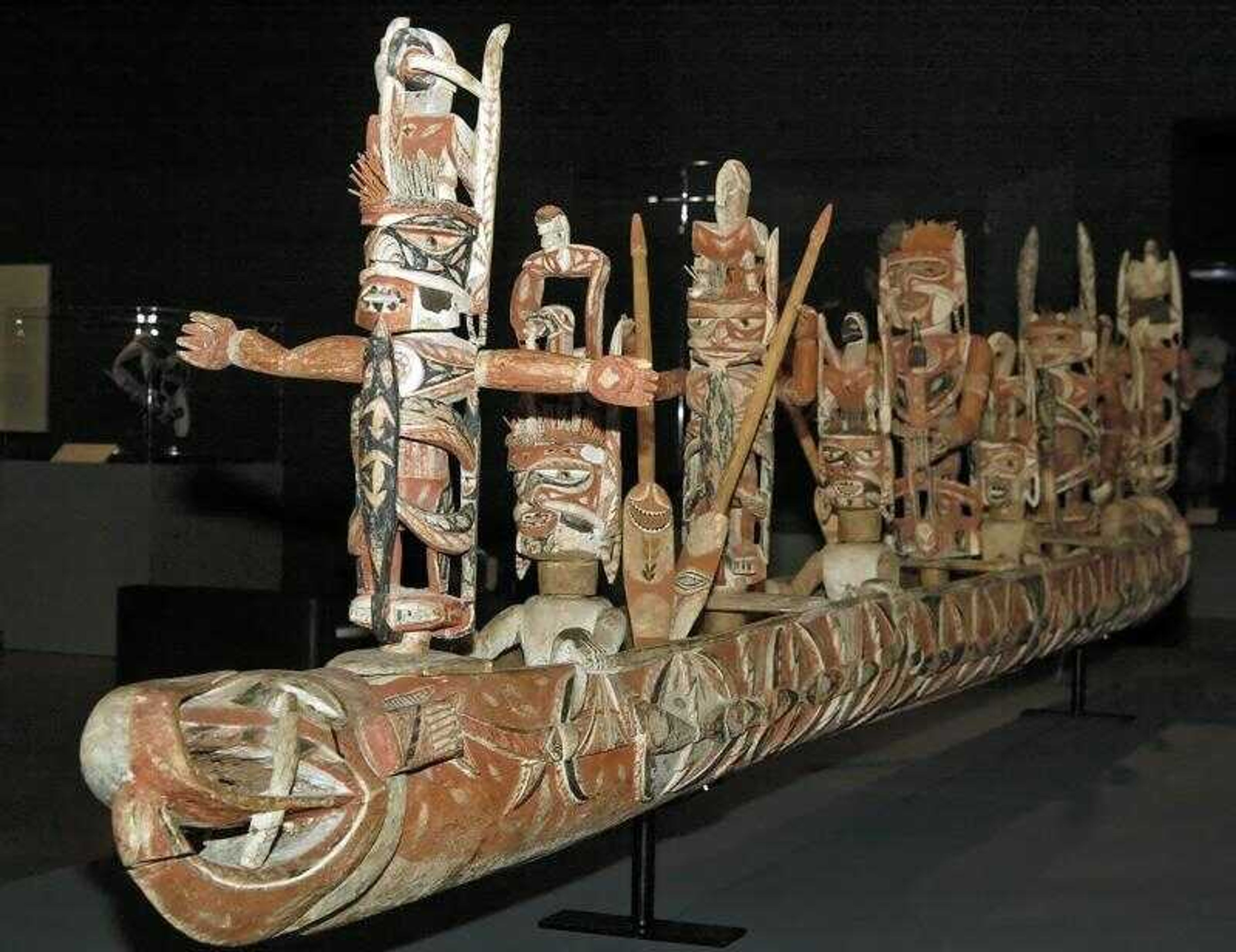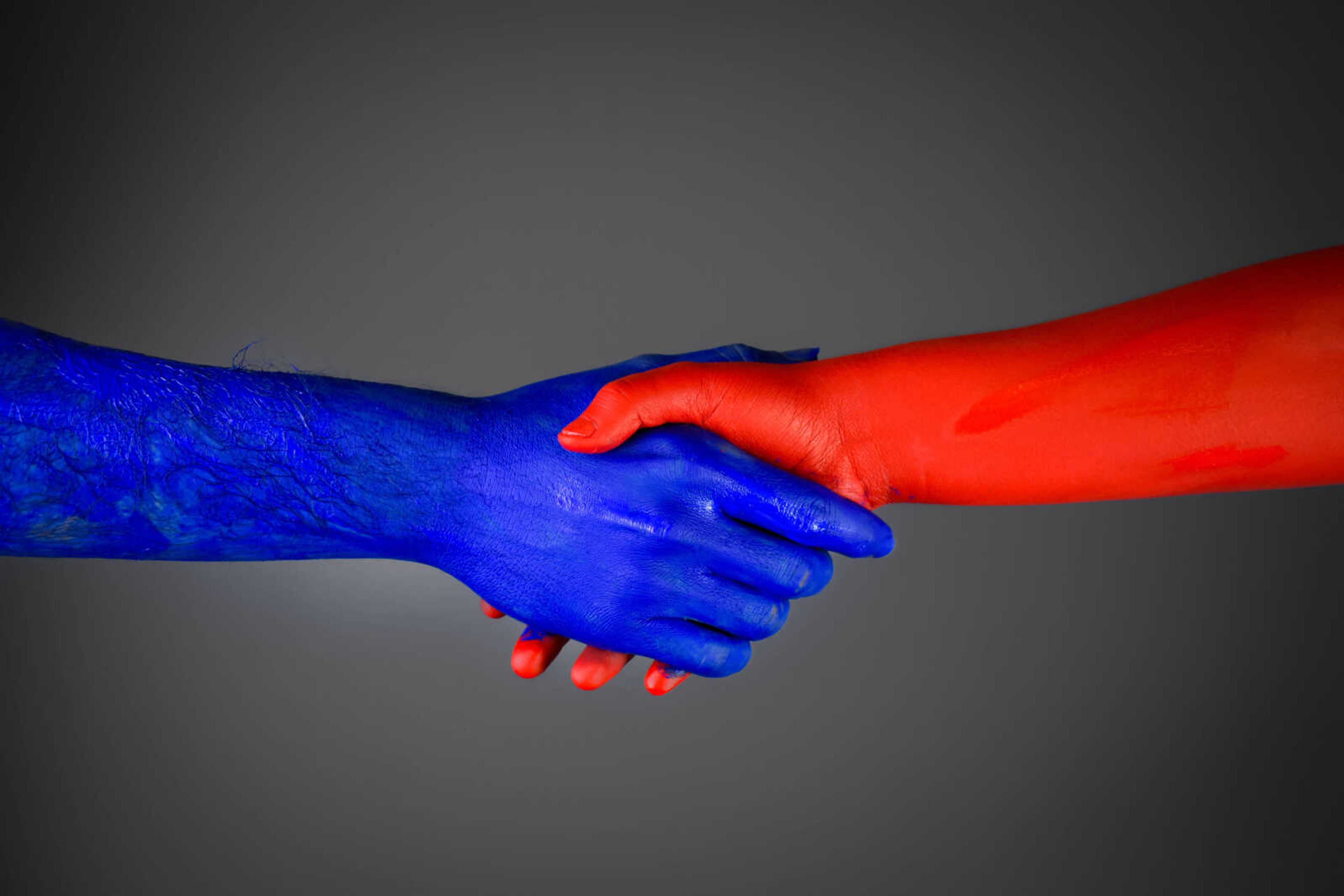ST. LOUIS -- At first glance, an exhibition of the art of New Ireland is bracing and foreign to the Western eye and mind-set, as is the New Guinea province itself.
A great, wooden bird and snake locked in combat, symbolizing the life-death struggle.
An intricately sculptured 15-foot canoe with a menacing Grim Reaper fish at the bow, carrying 10 human figures to their death.
A mask used in taboo removal that could be Grandpa Munster's evil twin.
They are among 79 works in "New Ireland: Art of the South Pacific," which will be on view through Jan. 7 at the Saint Louis Art Museum, its only stop in the United States before traveling to Paris and Berlin.
The universal themes of death and the departed's life force or spirit dominate the art from the remote chain of South Pacific islands -- a province of Papua New Guinea -- northeast of Australia.
In New Ireland, nature is abundant and powerful. Locals travel the great ocean in skimpy canoes, and drownings -- coupled with malaria -- mean few live to old age.
Animal images dominate the exhibit, especially birds, fish and snakes, each with its own symbolism. One piece shows fish and snakes deciding whether to take human life, not the other way around.
Co-curator Michael Gunn, who spent years collecting the stories behind the art by interviewing New Irelanders -- sometimes in the graveyards of their rituals -- said they are accepting of death. Gunn said he would always be surprised to learn that someone he had interviewed recently had died from malaria or a boat accident.
The exhibit's exquisitely crafted pieces made from wood, fiber and shell were created in the 19th and early 20th centuries for impromptu funeral rituals and as art to commemorate ancestors long after their death.
The funerary pieces, created in a few days, helped mourners channel their grief through an object.
The commemorative art works took up to a year to make. Each piece, made by someone who had a relationship with the dead, was displayed in a 30-foot tall structure. The ancient ritual practice and ceremony, known as the "malagan," which is at the center of northern New Ireland culture, was practical as well as spiritual. Honoring the dead consolidated marriages and social bonds.
After the malagan was over, the objects would be burned or otherwise destroyed.
Fortunately, some 20,000 pieces were preserved, sold to the occasional whaler or explorer who passed through, or to Germans who colonized New Ireland from 1884 to 1914. They ended up in 140 museums in Europe, Japan and Australia.
Gunn and co-curator Philippe Peltier of the Musee du Quai Branly in Paris spent 10 years researching in museums and in the field. They showed pictures of the objects to New Irelanders who identified their significance, origin and ritual.
The exhibition, organized by the Saint Louis Art Museum and the Musee du Quai Branly in Paris, in collaboration with the Ethnologisches Museum in Berlin, represents the best and most varied of the world's collection, which Gunn had begun compiling in a data base 20 years earlier.
On one visit to a New Ireland village, Gunn tried to interview an 80-year-old man who was said to be the last living person to take part in a ceremony involving a bearded, stocky ancestral figure known as an Uli. But he came too late.
"We sat down and it rapidly became quite clear he had lost it," Gunn said of the man's mental acuity. "He couldn't remember. We came five years too late."
In southern New Ireland, warrior men built alliances through secret societies. They used masks and three-dimensional wood and stone sculptures to depict ancestors. Few of those objects were ever relinquished to museums. Luckily, they're represented in the exhibit.
New Ireland, part of the Bismarck Archipelago in the southwest Pacific, was named by a British explorer in 1767. Settled 33,000 years ago, it was spared European influence until the arrival of missionaries and German colonists in the late 1800s. It was a place that until recently was so removed from Westernization, that lineage was traced through women, and family disputes were settled by imposing taboos that lasted years.
Today, the malagan ritual coexists with Christianity in some places, but in other villages, where fundamentalist Christianity is practiced, the old traditions have stopped, Gunn said.
New Ireland today has no fast-food restaurants, no supermarkets, no formal health care either. The art tradition continues, but Gunn fears it will be lost to outside influences brought by the recent discovery of gold.
"It is the beginning of the end," Gunn said. "It will pretty well wreck it."
"New Ireland: Art of the South Pacific" moves to Musee du Quai Branly, April 2 to July 8 and Ethnologisches Museum Aug. 10 to Nov. 11.
Connect with the Southeast Missourian Newsroom:
For corrections to this story or other insights for the editor, click here. To submit a letter to the editor, click here. To learn about the Southeast Missourian’s AI Policy, click here.









